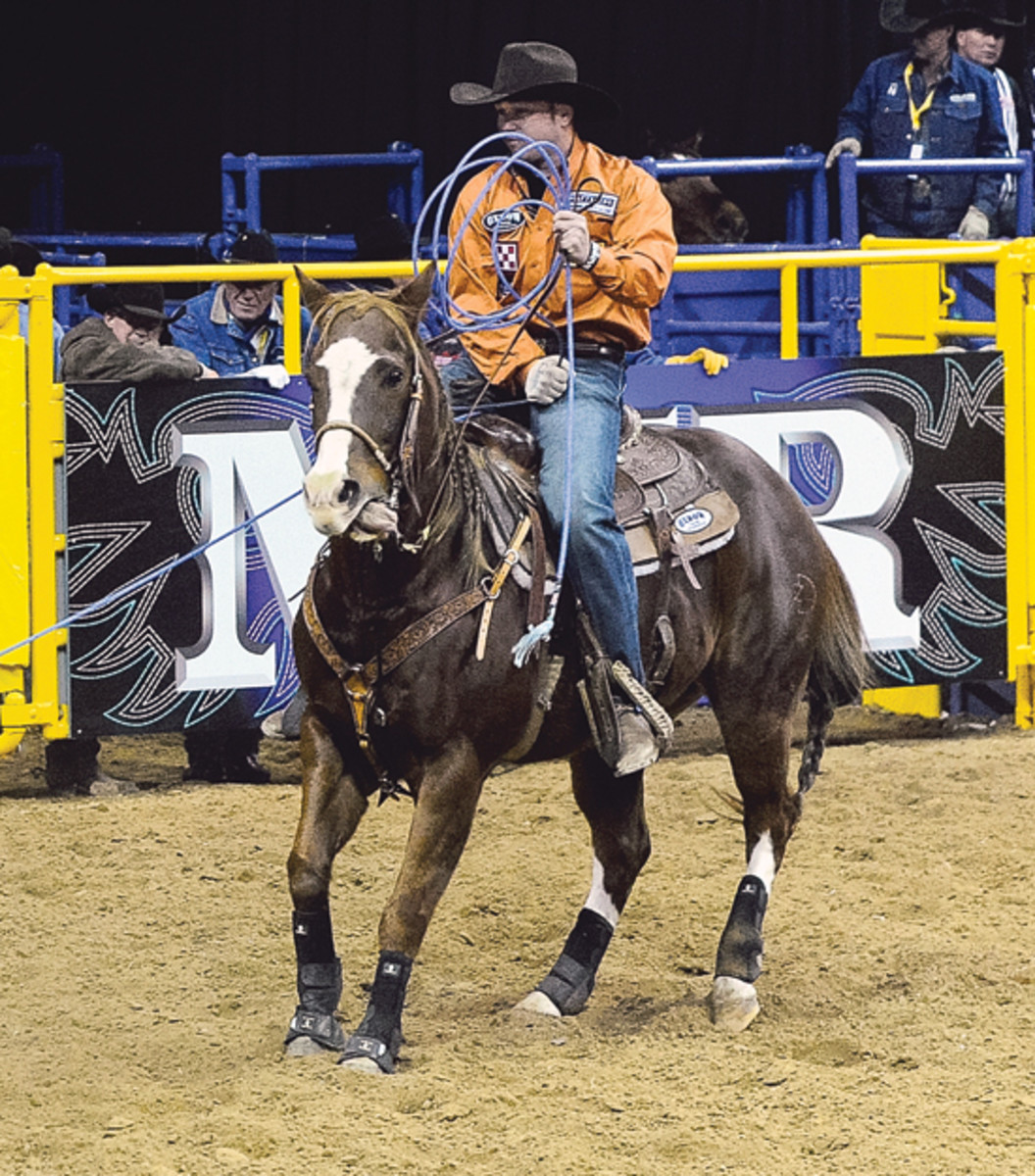THE HORSE

A man with a name as illustrious as Fred Emory Hawkins II has plenty of personality, and so does his number-one partner—a 10-year-old sorrel mare that he trained himself. “Buddy” Hawkins, 27, is hoping to earn a second straight Wrangler National Finals Rodeo berth this December in just his fourth year of PRCA competition.
Hawkins, a Kansas native, won San Antonio and Nampa last year with Drew Horner and wound up 14th in the world standings with the help of the mare. Daisy is formally named Roses Might Do. Her sire, He Might Do Too, is a grandson of Blondys Dude that goes back to Leo Goldseeker and Skipper W. And Daisy’s dam is by a Jet Deck grandson out of a Leo granddaughter.
Hawkins was riding horses for Jim Lawrence of Dewey, Okla., in 2006 when he traded for Daisy as a 2-year-old.
THE PROBLEM
It was two weeks before the NFR, and Daisy was in between laps while swimming at an equine facility when something scared her. Nobody’s sure why she hit reverse, but she ran backwards and slammed into a concrete ledge, slicing a jagged stretch of hide completely off the inside of her left hock.
“It was just a freak accident,” said Hawkins. “She’d been swimming before, and she doesn’t love it, but she doesn’t hate it.”
The carved-up portion of her hock wasn’t too deep because there isn’t much depth to a hock anyway, in terms of tissue. But the hock can be one of the worst locations for a laceration because it’s always in motion and the skin there is under so much pressure. Even worse was the timing.
THE SOLUTION
Hawkins immediately took Daisy to his favorite veterinarian. Dr. John Marcotte of Marcotte Veterinary Clinic in Vinita, Okla., could tell immediately the wound needed to be sewn up.
“When you talk about skin lacerations, a lot of people don’t think you would sew something up that’s on the lower leg of a horse,” said Dr. Marcotte, who founded the clinic in 1998. “But that’s one of the most important places to sew up a wound.”
Upper body wounds often heal just fine without a whole lot of suturing, he said, and you usually have very little scar formation on the upper body. But cuts on legs are typically very slow to heal and will heal with a lot of proud flesh, which can impede motion.
Marcotte’s decision to sew up the hock had to do with more than avoiding proud flesh—he also had a tiny window of time if Hawkins was to use Daisy at his first NFR.
“Typically, the body lays down connective tissue until it granulates and the edges of the cut are stable,” said Dr. Marcotte. “Because there isn’t much extra skin in the location of the hock, every time the joint moves, the edges of the cut move. That’s why it’s so important, if at all possible, to sew up a wound in that location—because it will just take so long to heal if you don’t.”
Luckily, after all the damaged tissue was trimmed and the wound clean, there was enough healthy skin to stitch together. If the wound isn’t clean or healthy tissue is unavailable, a suture will simply pull through the skin, he said. The other lucky stroke was that the jagged concrete ledge hadn’t penetrated any tendons or the joint surface.
Hawkins left Daisy at Marcotte Vet Clinic so they could administer special wraps and laser therapy to keep circulation up and swelling down, thereby expediting the healing process.
“Buddy really needed that horse in a short period of time,” said Dr. Marcotte. “There was no option to fail on this one.”
While different lasers have different effects, research shows the therapy to increase the rate of healing.
“Different wave-lengths of lasers do different things,” said Dr. Marcotte. “A post-surgical laser treatment of wounds and surgical incisions increases cell metabolic rate and should decrease healing time by about 60 percent. There are different settings that can be used to control inflammation and swelling at the wound site, as well.”
Hawkins used Daisy for six rounds of the NFR, stepping on his gelding, Rue, for the other four. He and Horner split the third go-round win on a 4.2-second run. Most recently, the pair used a big Fort Worth victory to sail into the top five in the 2014 world standings.










